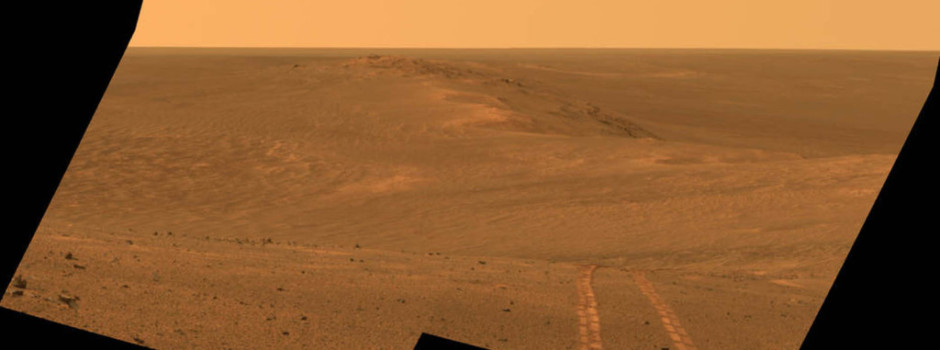
For human space missions beyond low-Earth orbit the logistical burden is at least twice as great compared to missions in low-Earth orbit. Take, for instance, a trip to Mars, which is being planned by NASA to occur sometime in the 2030s. For this type of long duration mission there will be limited or no resupply capabilities, which means—among other things—limited clothing supplies.
What that means right now for Evelyne Orndoff, M.S., senior textiles engineer at NASA Johnson Space Center, Houston, Texas, is a lot of space wear research. The IVA (Intra Vehicular Activity) Clothing Study, which concluded in March 2015, was the first study NASA conducted with Russian Federal Space Agency-Roscosmos under the “utilization Sharing Plan On-Board ISS.” The study looked at how study participants (astronauts and cosmonauts on the International Space Station) evaluated clothing used during aerobic exercise and routine wear worn during office or lab work. Participants filled out a daily questionnaire on an ordinal preference scale of nine sensory elements and on reasons for retiring a used garment.
Requirements for space wear garments for long duration missions include durability, cleanability, comfort, flame-resistance and—this may surprise people—the garments should be aesthetically pleasing.
Cotton has been the fiber of choice for most low-Earth orbit missions but Orndoff and others are taking a good look at other fibers that would better meet the demands of beyond low-Earth orbit missions. “Astronauts are comfortable with cotton but we need to look at properties such as flame resistance, odor control, as well as comfort and color,” Orndoff says. “We’re revisiting wool, for one, because in terms of flame resistance and odor control, wool is really a one-of-a-kind fiber.”
The comfort of wool is a concern but NASA has conducted studies on the ground that show that people can wear wool longer, whether or not they had the general perception of it being prickly. “Participants in the study who were wearing wool, and sweat in wool, wore their garments longer than those who had been given garments made of other types of fibers,” Orndoff says. “That’s why we’re considering wool as a potential fabric for long-duration missions.”

Researchers are also looking at synthetic fibers, as well as finishes for odor control and cleanability. “The IVA Clothing Study was our first effort looking at high-tech, new fabrics made of existing materials but redesigned with polyester microfibers,” Orndoff says. “We’re looking at lighter weight materials too. Reduction in mass and volume are essential for those long-duration missions.”
Man-made fibers such as polyester have been used on the space station in small quantity, and under strict handling conditions. The polyester garments are exposed in the air only a few hours during exercise and after exercise to dry. The rest of the time, they are stowed away in flame retardant bags.
For missions beyond low-Earth orbit, materials that melt and drip if there is a flame are not desirable. “On the space station, the atmosphere in the crew cabin is fairly close to the Earth’s atmosphere, with a similar oxygen concentration so we allowed some of those materials, especially for exercise clothing,” Orndoff says. “But what we did was make sure there was no source of ignition nearby. To this date we have allowed only a small amount of materials like polyester.”
Finishes on wool and modacrylic garments are also being considered to aid in keeping a garment clean and having acceptable odor, while offering flame resistance. Exactly how flame-resistant garments need to be depends on the oxygen concentration in the atmosphere. Orndoff compares the requirements needed for NASA’s Orion Multi-Purpose Crew Vehicle, which is designed for missions beyond low Earth orbit and into deep space, against that of the International Space Station.
“Right now, for example, I was told that in a non-ventilated area of Orion, we want materials that do not ignite in 40 percent oxygen by volume at 10.2psi pressure,” she says. “In a ventilated area, the requirements would be for materials not to ignite in 30 percent oxygen by volume at 10.2psi—so that is more strict than what we have in the cabin inside the space station right now. Orion, in that sense, is reminiscent of Skylab and the Apollo capsule. Skylab’s atmosphere was oxygen-rich, well over 50 percent.”
The wardrobe in Skylab and Apollo was made mostly of fibers that do not ignite easily or melt such as glass, fluoropolymer, polybenzimidazole (PBI); and Durette, a chemically treated fire-retardant material developed by Monsanto under contract with Johnson Space Center.
“These fibers were not needed in the Space Shuttle and International Space Station because of their ambient atmosphere,” Orndoff says. “Some of these fibers, like PBI, are still manufactured and used for protective clothing in Earth applications but are usually blended with aromatic polyamides (i.e. Nomex and Kevlar). Because PBI is costly, and the blends work fine for Earth applications, there has not been a reason to make fabrics of 100-percent PBI. But now, looking at what the needs for Orion will be, we will probably be looking for companies who will make 100-percent PBI again.”
Evelyne Orndoff will be a speaker at IFAI’s Advanced Textiles Conference, which begins October 6, 2015, in Anaheim, Calif. More information on her presentation and other presenters is available on the IFAI Expo website.
Sigrid Tornquist is a freelance writer and editor based in St. Paul, Minn.
 TEXTILES.ORG
TEXTILES.ORG


